New Film Shows How Art Brings Life to Green-Wood Cemetery
Discover how the living and the dead make Green-Wood Cemetery a vibrant part of NYCs cultural scene!


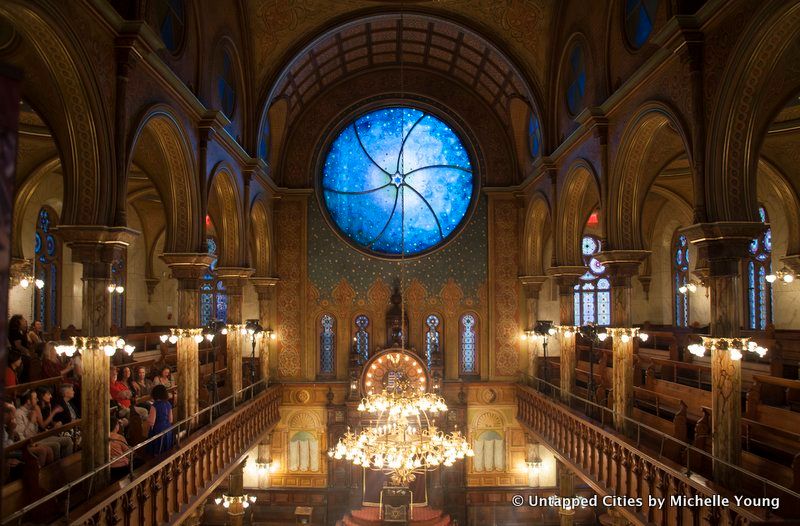
Moorish Revival architecture is still flourishing in every corner of Manhattan: Structures from Chinatown to the Upper East Side carry the characteristic ogee arches and muqarnas. What is this architectural style, and how have New York buildings harnessed its unique beauty?
New York is a relatively young city, so its Moorish Revival architecture is just that––a revival. True Moorish style is one of a few variations on Islamic architecture, specifically Berber-Islamic and Hispano-Islamic styles from North Africa and Islamic Iberia (also called al-Andalus). Its signature arches, decorative calligraphy, and ornate tiling can still be seen around Spain and Portugal in structures such as the Paderne Castle or the Mosque-Cathedral at Córdoba.
But the 19th-century European fascination with the East brought the Moorish out of Spain and into European castles and gardens, most notably the Vorontsov Palace in Crimea. In 1832, Washington Irving’s Tales of the Alhambra spread the fascination with Andalusia to the antebellum U.S. In fact, one of PT Barnum’s grand homes––the Iranistan mansion in Bridgeport, CT–– featured the style beautifully before being destroyed by fire only ten years after its construction. Moorish smoking rooms then became fashionable in post-Civil War America. As the style spread throughout the mid-19th century, it swelled in popularity––particularly for theaters and synagogues, and particularly in Manhattan.
Here are 5 examples in Manhattan of this style of architecture:
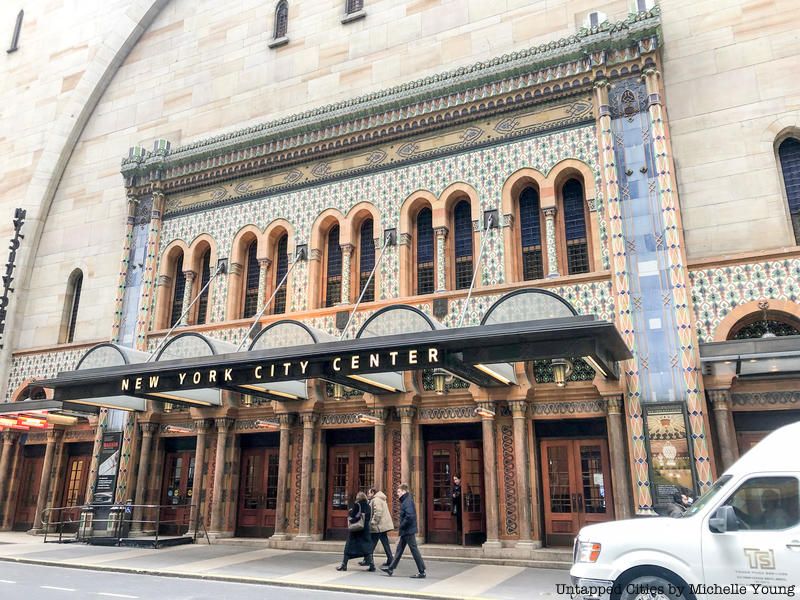
Perhaps most famously, the New York City Center, a performing home for major dance companies including the Fall for Dance Festival, features a distinct Moorish Revival style. Located on 55th Street between 6th and 7th Avenue, the Center was originally built in 1923 as the Mecca Temple: a meeting place for members of a specific Masonic order. (These “shriners”––members of the Ancient Arabic Order of the Nobles of the Mystic Shrine–– originally met in Carnegie Hall one block to the north, but were booted out by the management for the copious amounts of cigar smoke that accompanied each shriner meeting.) The Center’s auditorium in particular makes use of muqarnas, or stalactite-like projecting decorative devices on ceilings, and ogee arches, or arches that curve in such a way that they resemble Hershey’s kisses.
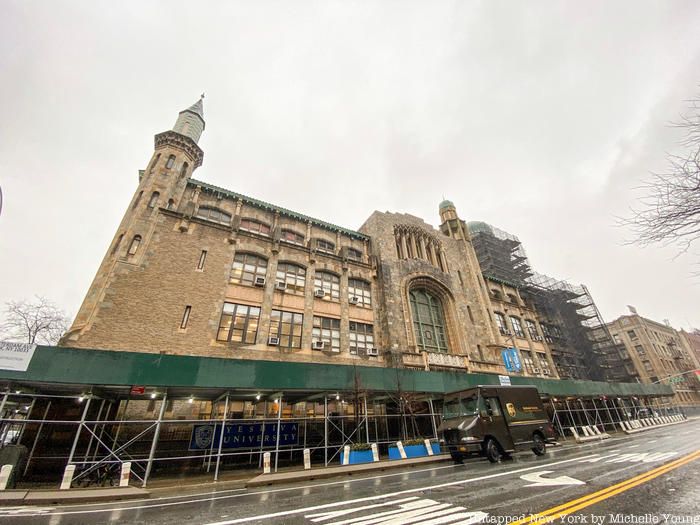
Farther uptown, Zysman Hall––the oldest building of Yeshiva University in Washington Heights––blends Art Deco and Moorish Revival. The University commissioned Charles B. Meyers to “draw from 19th century Jewish architectural tradition” in building their Eldridge Street Synagogue. Zysman Hall now boasts copper accents, multicolored tiles, and sweepingly romantic towers, turrets, and domes visible from the street.

Similar Moorish influences are featured in Chinatown’s Eldridge Street Synagogue, notable for being one of the first American synagogues erected by Eastern European Jews. Its 70-foot-high vaulted ceilings and arches in particular enchanted visitors and the press––at least, before unsafe stairs and rain leaks forced the sanctuary to close to the public 1950. Its reopening in 2007 as both a synagogue and museum (57 years and $20 million later) has made the “gasp-inducing” structure once more part of the community.
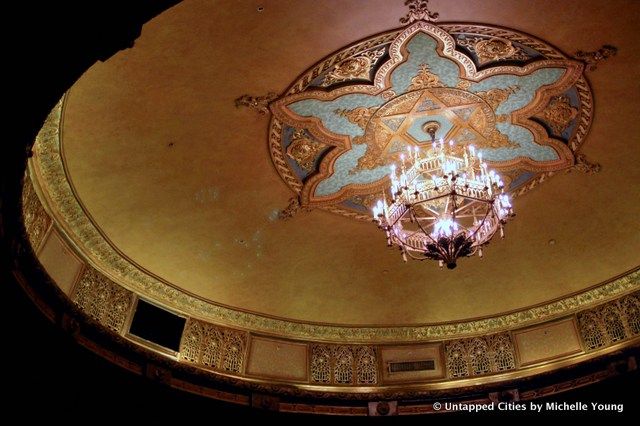
If you’re in the mood to see a movie the next time you’re in the East Village, the Village East Cinema on Second Avenue and 12th Street is a beautiful option in the Moorish Revival style. Designed by Harrison G. Weisman in 1925, the theater was originally built for actor Maurice Schwartz, or “Mr. Second Avenue,” but it has gone through a rotation of names since then: the Yiddish Art Theater, the Louis N. Jaffe Theater, and the Phoenix Theater. Pay special attention to the horseshoe arches and the voussoirs around the entrance’s keyhole arch––beautiful, but surprisingly understated. The theater has been converted into a multiplex so if you’re interested in the main hall, be sure to ask which movie is playing there first.
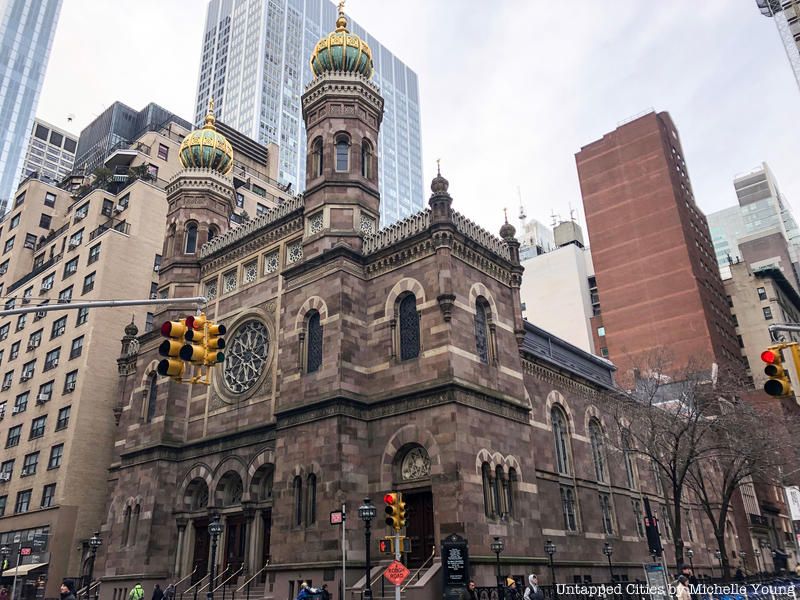
Central Synagogue remains the crown jewel of the Manhattan Moorish Revival. Dating from 1872 (making it the oldest synagogue in continuous use), its beauty actually came under criticism in earlier days by those who felt its excess would inspire envy. Nevertheless, its rich blue-and-gold ceilings, intricately tiled floors, horseshoe arches, and voussoirs have led the NYC Landmarks Preservation Commission to call it the “finest example of Moorish Revival Architecture in New York City.”
It’s certainly in good company.
Subscribe to our newsletter